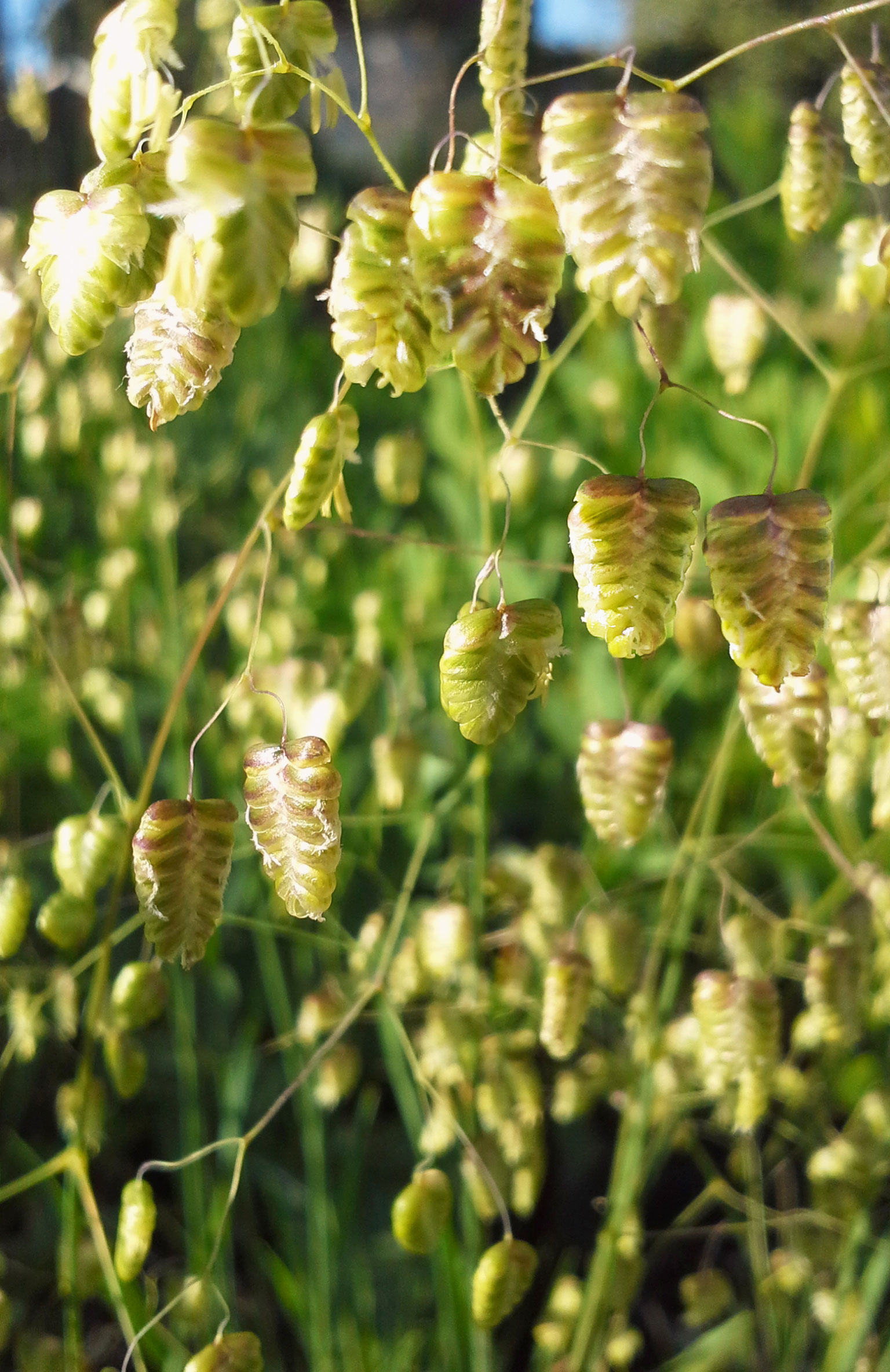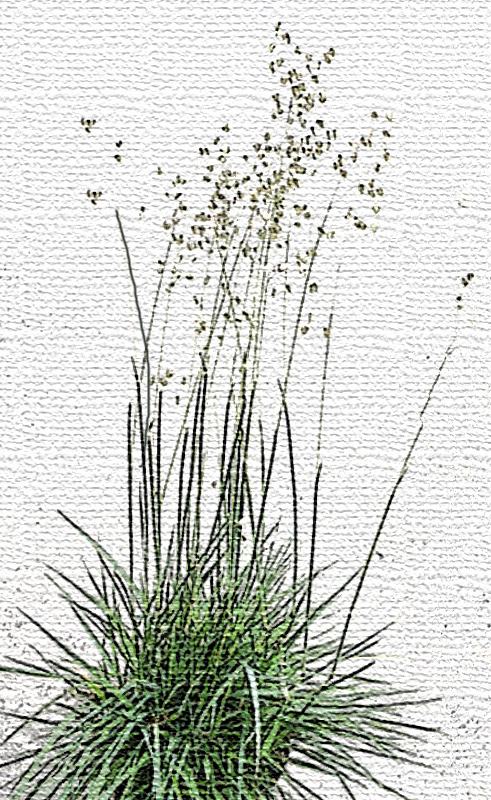 There is something enchanting about plants with flowers that seem to hover in midair. In late spring, when the lush clumps of green grass blades send up their seed stalks, the garden becomes graced with pendant, heart-shaped florets that hang from nearly invisible, wire-like stems. Shooting straight up from the grassy mound of their origin, the seed stalk forms tiny, but numerous dangling lockets that catch the light and play with the slightest breeze. It is said that the rattling of the seeds heads can be heard when one listens closely, providing a soundtrack for quiet moments in the garden. Soft and lovely along pathways, in mass plantings, or in containers, Quaking Grass is a whimsical addition to the garden. The lively flower spikes are a wonderful addition to cut flower arrangements, where they add movement and a touch of magic. There is something enchanting about plants with flowers that seem to hover in midair. In late spring, when the lush clumps of green grass blades send up their seed stalks, the garden becomes graced with pendant, heart-shaped florets that hang from nearly invisible, wire-like stems. Shooting straight up from the grassy mound of their origin, the seed stalk forms tiny, but numerous dangling lockets that catch the light and play with the slightest breeze. It is said that the rattling of the seeds heads can be heard when one listens closely, providing a soundtrack for quiet moments in the garden. Soft and lovely along pathways, in mass plantings, or in containers, Quaking Grass is a whimsical addition to the garden. The lively flower spikes are a wonderful addition to cut flower arrangements, where they add movement and a touch of magic.
 Native to Europe and Asia, Quaking Grass is extremely easy to grow and thrives in
many soil types and watering regimes. We have been impressed with the drought and heat tolerance of this little perennial grass which appears lush even in adverse conditions. Its broad appeal has, over the course of many years, led it to be alternatively known as (among other names) Cow-quake, Dithering-grass, Doddering Dillies, Doddle-grass, Earthquakes, Jiggle-joggles, Lady's-hair, Maidenhair-grass, Pearl Grass, Quakers-and-shakers, Tottergrass, and (my favorite!) Wag-wantons. Though the dancing spikelets have captured the imagination of many, the semi-evergreen mounds of mid-green blades are not to be discounted. As a ground cover, Quaking Grass forms a meadow of tufty green hummocks, which are completely attractive even when out of bloom. Though seldom available in nurseries, this one is a delightful, low-maintenance addition to your garden that won't spread aggressively, as some grasses can. Grows 18"across and to 2' high in bloom. Native to Europe and Asia, Quaking Grass is extremely easy to grow and thrives in
many soil types and watering regimes. We have been impressed with the drought and heat tolerance of this little perennial grass which appears lush even in adverse conditions. Its broad appeal has, over the course of many years, led it to be alternatively known as (among other names) Cow-quake, Dithering-grass, Doddering Dillies, Doddle-grass, Earthquakes, Jiggle-joggles, Lady's-hair, Maidenhair-grass, Pearl Grass, Quakers-and-shakers, Tottergrass, and (my favorite!) Wag-wantons. Though the dancing spikelets have captured the imagination of many, the semi-evergreen mounds of mid-green blades are not to be discounted. As a ground cover, Quaking Grass forms a meadow of tufty green hummocks, which are completely attractive even when out of bloom. Though seldom available in nurseries, this one is a delightful, low-maintenance addition to your garden that won't spread aggressively, as some grasses can. Grows 18"across and to 2' high in bloom. |

